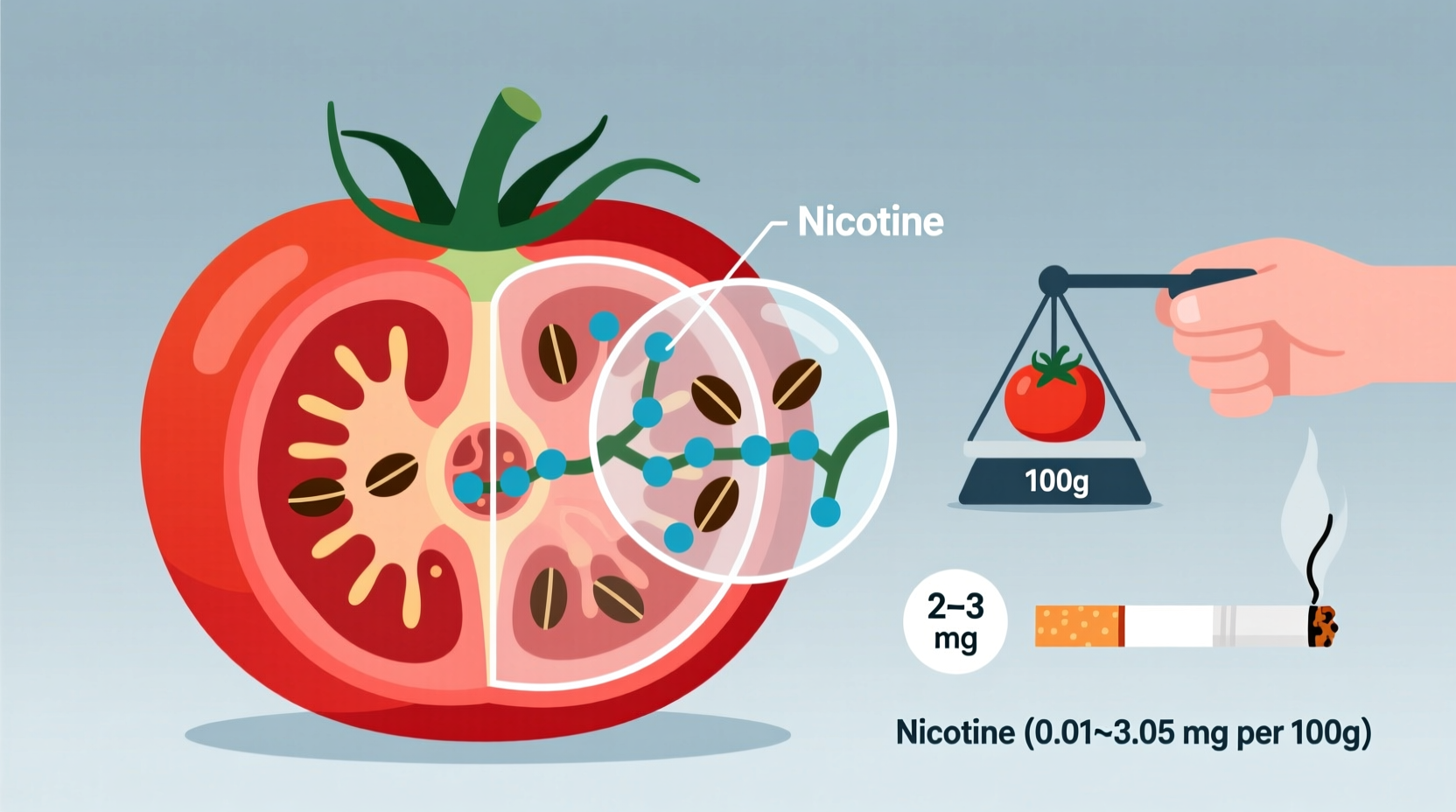Discover why this surprising fact shouldn't concern you and how plant biology creates these minute nicotine levels in everyday foods. Understanding these natural compounds helps separate scientific reality from unnecessary dietary fears.
Why Tomatoes Contain Nicotine: The Nightshade Connection
Tomatoes belong to the Solanaceae family, commonly known as nightshades, which includes potatoes, eggplants, and peppers. These plants naturally produce nicotine as a defense mechanism against pests. Unlike tobacco (Nicotiana tabacum), which concentrates nicotine in its leaves, edible nightshades contain only trace amounts in their fruits.
Research from the National Institutes of Health confirms that nicotine biosynthesis occurs in the roots of these plants, with only minimal transfer to edible portions. The compound serves as a natural insect deterrent without affecting human consumers at these minuscule concentrations.
Nicotine Levels Across Common Nightshade Vegetables
| Vegetable | Nicotine Content (mg/kg) | Equivalent Cigarette Comparison |
|---|---|---|
| Tomato | 0.0001 - 0.001 | 1 kg = 0.00002 cigarette |
| Eggplant | 0.0002 - 0.0005 | 1 kg = 0.00004 cigarette |
| Green Pepper | 0.0001 - 0.0003 | 1 kg = 0.00002 cigarette |
| Potato | 0.00005 - 0.0001 | 1 kg = 0.00001 cigarette |
| Tobacco (cigarette) | 6,000 - 28,000 | 1 cigarette = 1 cigarette |
This comparison shows that you would need to consume approximately 1,000 kilograms of tomatoes to ingest the same nicotine amount found in a single cigarette. The human body also processes dietary nicotine differently than inhaled nicotine, with significantly lower absorption rates through the digestive system.
Factors Affecting Nicotine Levels in Tomatoes
Several variables influence the trace nicotine content in tomatoes:
- Plant maturity: Green, unripe tomatoes contain slightly higher concentrations than fully ripened red tomatoes
- Growing conditions: Stress factors like pest exposure can trigger increased nicotine production
- Varietal differences: Some heirloom varieties show marginally different alkaloid profiles
- Soil composition: Nutrient availability affects overall plant biochemistry
According to agricultural research published in the PLOS ONE journal, these variations remain within the same order of magnitude—never approaching levels of concern for human consumption.
Health Implications: Why This Matters to You
The trace nicotine in tomatoes presents no health risk for several scientifically established reasons:
- Minuscule quantities: The amount is too small to trigger any physiological response
- Digestive processing: Oral consumption results in dramatically lower bioavailability than smoking
- Natural metabolism: Your body processes plant-derived alkaloids differently than concentrated nicotine
- Beneficial compounds: Tomatoes' nutritional benefits far outweigh theoretical concerns
For perspective, the U.S. Food and Drug Administration emphasizes tomatoes' significant health benefits, including high lycopene content and antioxidant properties, which contribute to cardiovascular health and cancer prevention.
Special Considerations and Context Boundaries
While tomato nicotine poses no general health risk, certain contexts warrant consideration:
- Nicotine-sensitive individuals may experience mild reactions to extremely large quantities
- Infants and young children have different metabolic processing capabilities
- People using nicotine replacement therapy should maintain perspective on relative doses
- Those with severe nightshade allergies should consult healthcare providers
Importantly, the European Food Safety Authority has established that dietary nicotine from vegetables falls well below thresholds requiring regulatory action. Their 2019 scientific opinion confirms these natural compounds present no public health concern at typical consumption levels.
Practical Takeaways for Consumers
Based on current scientific understanding, you can confidently enjoy tomatoes without nicotine concerns:
- Continue including tomatoes in your regular diet—their health benefits significantly outweigh theoretical risks
- Don't avoid green tomatoes specifically for nicotine reasons (though they may be more acidic)
- Focus on overall dietary patterns rather than isolated compounds
- Consult healthcare providers if you have specific sensitivities or medical conditions
Remember that many healthy foods contain naturally occurring compounds that sound alarming out of context. The key is understanding quantities and biological relevance—in this case, tomato nicotine exists in amounts too small to matter for human health.

Frequently Asked Questions
Can eating tomatoes make you test positive for nicotine?
No, the trace nicotine in tomatoes is far too minimal to trigger a positive result on standard nicotine tests. You would need to consume impossibly large quantities—hundreds of kilograms in a short period—to potentially affect test results.
Do cooked tomatoes have less nicotine than raw tomatoes?
Cooking doesn't significantly reduce nicotine content as it's a stable compound. However, since the original amounts are already negligible, this difference has no practical health implications for consumers.
Are organic tomatoes higher in nicotine than conventionally grown ones?
Research shows no consistent difference in nicotine levels between organic and conventionally grown tomatoes. Any variations relate to plant stress factors rather than farming methods.
Should pregnant women avoid tomatoes due to nicotine content?
No, medical authorities including the American College of Obstetricians and Gynecologists recommend tomatoes as part of a healthy pregnancy diet. The trace nicotine poses no risk compared to the nutritional benefits.











 浙公网安备
33010002000092号
浙公网安备
33010002000092号 浙B2-20120091-4
浙B2-20120091-4